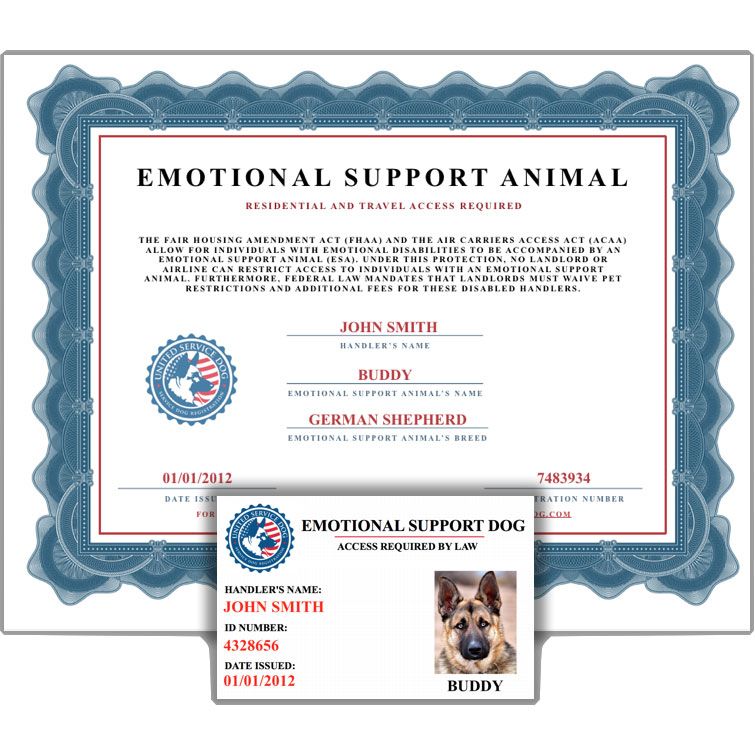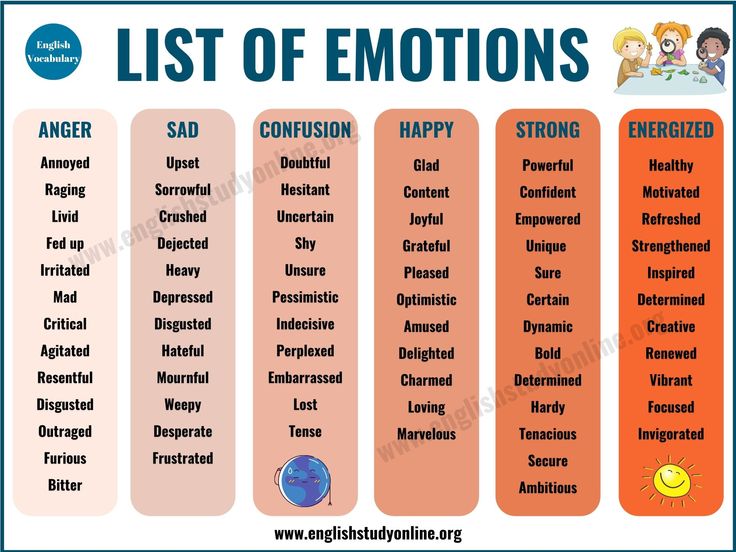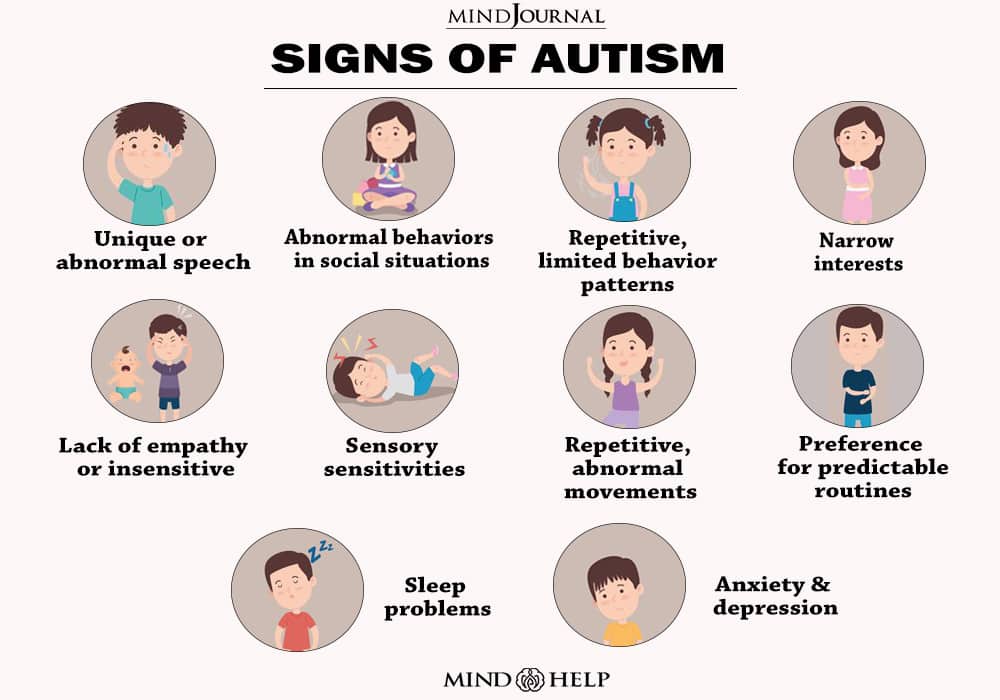Emotional support dog for ptsd
How do I get a service animal?
Taking care of an animal can be a great way to improve your mental health [1]. But not every landlord allows pets. You can get around this if a mental health professional certifies that you need an emotional support animal. There are other types of service animals too—it’s important to understand what you’re trying to get, because the steps are different for each type.
Emotional support animals (ESAs)
An emotional support animal (ESA) is just what it sounds like—a pet that provides emotional support. ESAs don’t need any special training (beyond the normal training a pet needs). Dogs and cats are the most common, but any domesticated animal can be an ESA.
ESAs are covered under the Fair Housing Act. This allows people with an ESA to have their pet in their home even if there is a “no pet” policy. The law also prevents additional pet fees for ESAs. Small ESAs can also travel with you on a plane free of charge. Unlike service dogs, ESAs aren’t allowed into other public places that don’t normally allow pets.
In order to get the benefits of an ESA, you will need a “prescription” from a mental health professional. This is basically just a signed letter stating that you have a mental health condition and that your pet helps you deal with it. Some landlords and airlines will accept a letter from a medical doctor, but often it needs to be a therapist or a psychiatrist.
Service animals (dogs only)
The Americans with Disabilities Act (ADA) defines service animals as dogs that are individually trained to perform tasks for the benefit of an individual with a disability [2]. This can be a physical, sensory, psychiatric, intellectual, or other mental disability. Only dogs are legally considered service animals. Other domestic animals are covered only as emotional support animals or therapy animals.
Qualifying for a service dog is simple. Actually getting one is a bit harder. To qualify for a service animal, all you need to do is get written documentation from your healthcare provider that you have and are being treated for an emotional or psychiatric disorder or disability and require the assistance of an animal because of it.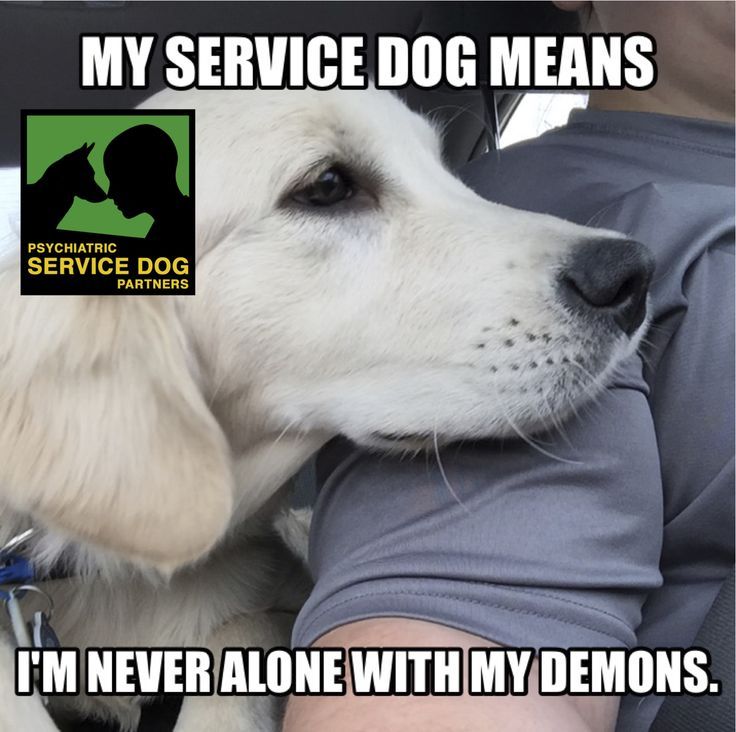 The work a dog has been trained to do must specifically relate to your condition. Training a service dog yourself can be difficult and can take years. Usually you would get a service dog from someone else who has already trained it.
The work a dog has been trained to do must specifically relate to your condition. Training a service dog yourself can be difficult and can take years. Usually you would get a service dog from someone else who has already trained it.
Psychiatric service dogs (PSDs)
A psychiatric service dog (PSD) is a specific type of service animal trained to assist those with mental illnesses. These include post-traumatic stress disorder (PTSD), schizophrenia, depression, anxiety, and bipolar disorder. For example, a dog may assist someone with PTSD in doing room searches or turning on lights. Or it might help someone in a dissociative episode from wandering into danger. Providing companionship, calming anxiety, or providing a sense of safety merely by its presence are not legally considered “tasks.”
If you’re not sure whether to get an ESA or a PSD, think about what your specific needs are. Is this animal going to assist you in tasks you wouldn’t otherwise be able to do? You’ll probably need a service animal.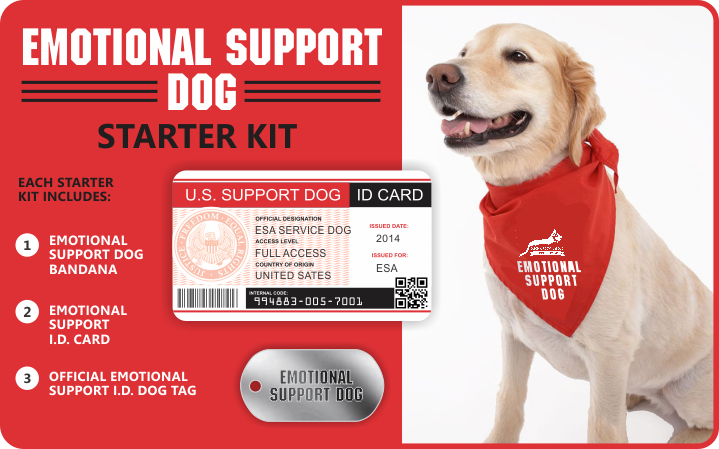 Are they primarily going to provide companionship, non-judgmental positive regard, and affection? That sounds more like an ESA, which is much easier to get anyway.
Are they primarily going to provide companionship, non-judgmental positive regard, and affection? That sounds more like an ESA, which is much easier to get anyway.
Therapy animals
Therapy animals are used in therapeutic settings, like hospitals or nursing homes. Some examples might be a cat that lives at a treatment facility, a dog that is taken to visit people in a disaster area, or a horse used in equestrian therapy. Therapy animals provide affection and comfort to people, but they are different than PSDs or ESAs. They are screened for their ability to perform a specific type of therapy, and they are handled by professionals.
Can you take care of an animal?
Before getting any kind of pet or service animal, it is important to seriously consider the responsibilities that come along with it. Think about whether you can care for it physically, mentally, and financially. Service animals in particular are a big commitment. ESAs are a little easier since they don’t need special training, but any pet is still a commitment.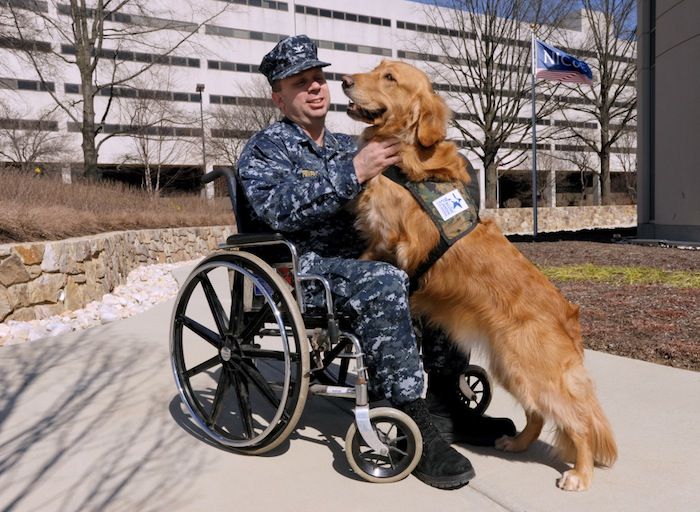 If you can’t handle a dog, consider a lower-maintenance pet like a cat or a fish. If even that is too much, try starting with a plant or a stuffed animal, or another form of treatment.
If you can’t handle a dog, consider a lower-maintenance pet like a cat or a fish. If even that is too much, try starting with a plant or a stuffed animal, or another form of treatment.
Show References
- Mental Health Foundation. (2022). Pets and mental health. Retrieved from https://www.mentalhealth.org.uk/explore-mental-health/a-z-topics/pets-and-mental-health
- Brennan & Nguyen. (2014). Service Animals and Emotional Support Animals
Where are they allowed and under what conditions? Retrieved from https://adata.org/guide/service-animals-and-emotional-support-animals
Dogs and PTSD - PTSD: National Center for PTSD
Available en Español
You may find a dog can lift your mood and be a good companion. There is not enough research to know if dogs help treat PTSD and symptoms. Learn about service dogs and emotional support dogs and the study VA is doing to learn more about dogs and PTSD.
Reading time: minutes
Owning a dog can lift your mood or help you feel less stressed. Dogs can help people feel better by providing companionship. All dog owners, including those who have posttraumatic stress disorder (PTSD) can experience these benefits.
Dogs can help people feel better by providing companionship. All dog owners, including those who have posttraumatic stress disorder (PTSD) can experience these benefits.
Currently, there is not enough research to know if dogs help treat PTSD and its symptoms. Evidence-based therapies and medications for PTSD are supported by clinical research. We encourage you to learn more about these treatments because it is difficult to draw strong conclusions from the few studies on dogs and PTSD that have been done.
What Are the Emotional Benefits of Having a Dog?
Dogs can make great pets. Having a dog as a pet can benefit anyone who likes dogs, including people with PTSD. For example, dogs:
- Help bring out feelings of love.
- Are good companions.
- Take orders well when trained. This can be very comfortable for a Service member or Veteran who was used to giving orders in the military.
- Are fun and can help reduce stress.
- Are a good reason to get out of the house, spend time outdoors, and meet new people.
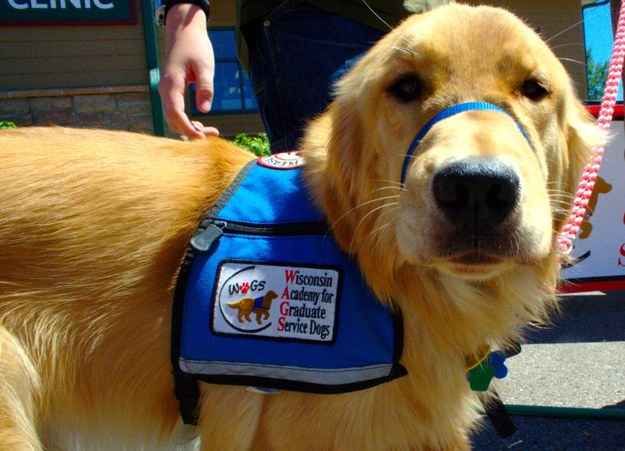
Recovering from PTSD
Recovering from PTSD is a process. Evidence-based treatments for PTSD help people do things they have been avoiding because of their PTSD, such as standing close to a stranger or going into a building without scanning it for danger first. Evidence-based treatments can also help people feel better. Dogs can help you deal with some parts of living with PTSD, but they are not a substitute for effective PTSD treatment.
Although people with PTSD who have a service dog for a physical disability or emotional support dog may feel comforted by the animal, there is some chance they may continue to believe that they cannot do certain things on their own. For example, if the dog keeps strangers from coming too close, the owner will not have a chance to learn that they can handle this situation without the dog. Becoming dependent on a dog can get in the way of the recovery process for PTSD. Based on what we know from research, evidence-based treatment provides the best chance of recovery from PTSD.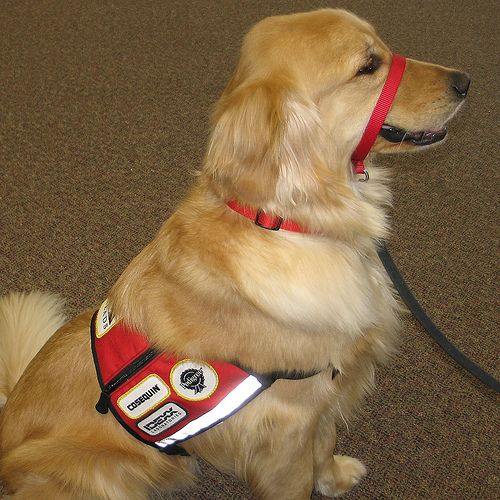
In This Article
Service dogs and emotional support dogs What do I need to know about dogs and PTSD? VA and service dogs
Service Dogs and Emotional Support Dogs
Service dogs
A service dog is a dog trained to do specific tasks for a person that the person cannot do because of a disability. Service dogs can pick things up, guide a person with vision problems, or help someone who falls or loses balance easily. For example, a service dog can help a blind person walk down the street or get dangerous things out of the way when someone is having a seizure.
Protecting someone, giving emotional support, or being a companion do not qualify a dog to be a service animal. To be a service dog, a dog must go through training. Usually the dog is trained to:
- Do things that are different from natural dog behavior
- Do things that the handler (dog owner) cannot do because of a disability
- Learn to work with the handler in ways that help manage the handler's disability
Because the handler depends on the service dog's help, service dogs are allowed in most public places the handler goes.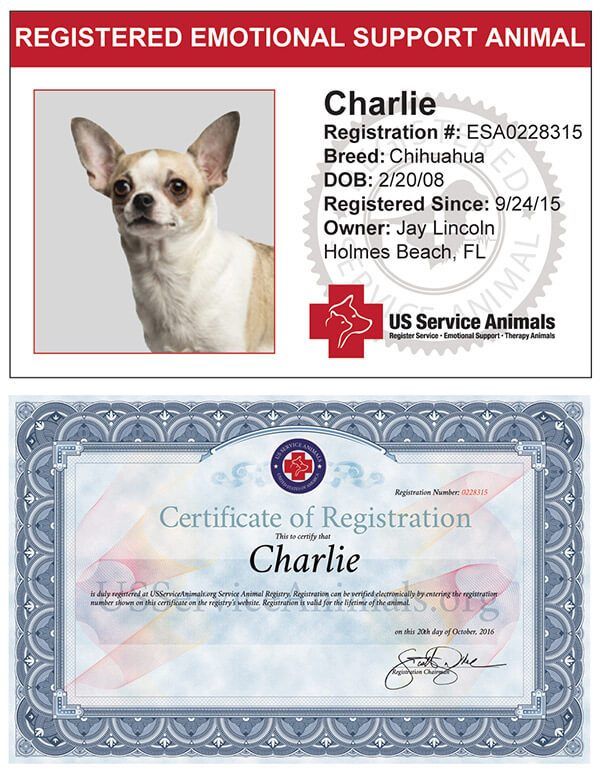 This is the case even if it is somewhere pet dogs usually cannot go, like restaurants or on airplanes. But there are a few exceptions. For example, service dogs can be asked to leave if they are not behaving well.
This is the case even if it is somewhere pet dogs usually cannot go, like restaurants or on airplanes. But there are a few exceptions. For example, service dogs can be asked to leave if they are not behaving well.
Emotional support dogs
An emotional support animal is a pet that helps an owner with a mental health condition. Emotional support dogs help owners feel better by giving friendship and companionship. These dogs are also called comfort dogs or support dogs.
An emotional support dog does not need special training. Generally, a regular pet can be an emotional support dog if a mental health provider writes a letter saying that the owner has a mental health condition or disability and needs the dog's help for emotional support.
In most states, emotional support dogs do not have special permission to go to all public places like service dogs do. But, emotional support dogs are sometimes allowed special consideration. For example, the owner may be able to get permission to have an emotional support pet in a house or apartment that does not normally allow dogs. Or, the owner may be able to get permission to fly on a plane together with the dog.
Or, the owner may be able to get permission to fly on a plane together with the dog.
To get special permissions, the dog owner needs to show a provider's letter to the landlord or airline. Sometimes, the landlord or airline will also want to see information about the provider, such as a copy of their professional license.
Back to Top
What Do I Need to Know about Dogs and PTSD?
Pets, service animals, and emotional support dogs need owners who can provide for them. Dogs require constant attention and care. It is a good idea to discuss getting a dog with your doctor or family before making the decision. If you have PTSD and are worried that it may be hard for you to provide a safe, caring home for a dog, it may be good to wait until after you get treatment for your PTSD and feel better.
You may already have a dog that helps you feel better or do things you would not otherwise do. But learning more about evidence-based PTSD treatments is important. Unlike people who have service dogs because they have permanent disabilities (like blindness or seizure disorders), people with PTSD can get better with treatment.
If you are looking for a service dog or emotional support dog, we recommend you carefully research any organizations you contact. You should only get a dog if you are confident it is well trained. The organization should be able to answer any questions you have.
Back to Top
VA and Service Dogs
VA has started a research study to see if having a service dog or emotional support dog helps people with PTSD do more activities and have a better quality of life. The study is expected to take several years to complete. The National Center for PTSD is not involved in this study, but we will provide results when they become available.
VA does not provide service dogs for physical or mental health conditions, including PTSD. VA does provide veterinary care for service dogs that are deemed medically necessary for the rehabilitation or restorative care plan of Veterans with permanent physical impairments. If research supports the use of service dogs for PTSD, VA will provide veterinary care for such dogs.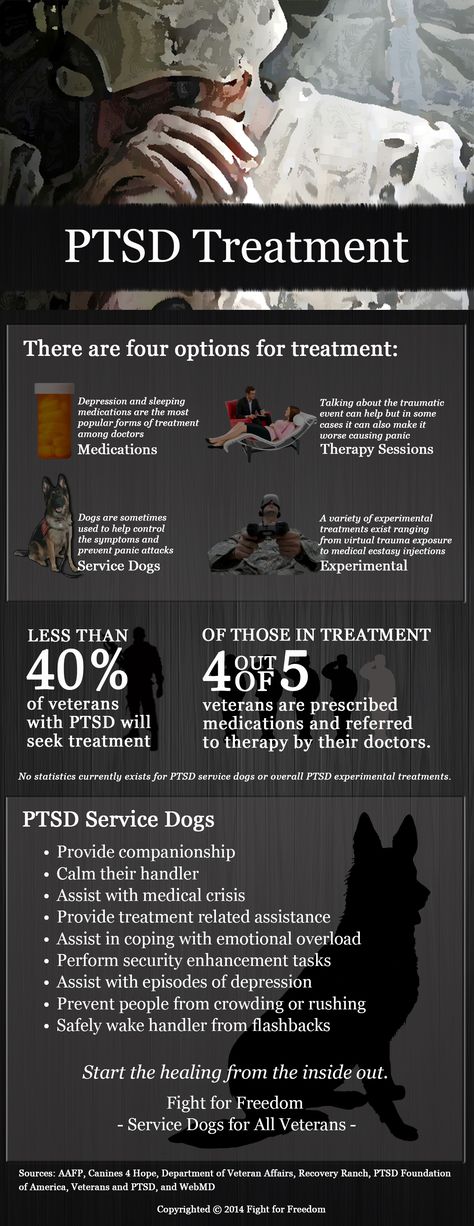 Read more information on VA and service dogs.
Read more information on VA and service dogs.
Back to Top
Do service dogs really help with post-traumatic stress?
Guide dogs can help veterans with PTSD - a growing body of evidence shows they can reduce anxiety in practice.
Research indicates that psychiatric service dogs may be an effective complementary treatment option for military veterans with post-traumatic stress disorder (PTSD). Eliminating anxiety episodes has been found to be among the most important tasks a service dog can perform for veterans with PTSD, studies show.
A study by Purdue University researchers, published February in the Journal of Consulting and Clinical Psychology, shows that veterans who had service dogs to help with diagnosed cases of PTSD were much better psychologically than their peers who stood in line to receive an animal.
For example, service dogs suffering from PTSD can be trained to detect physical signs of anxiety and distress in veterans to alert and interrupt anxiety and panic attacks during the day and relieve nightmares at night.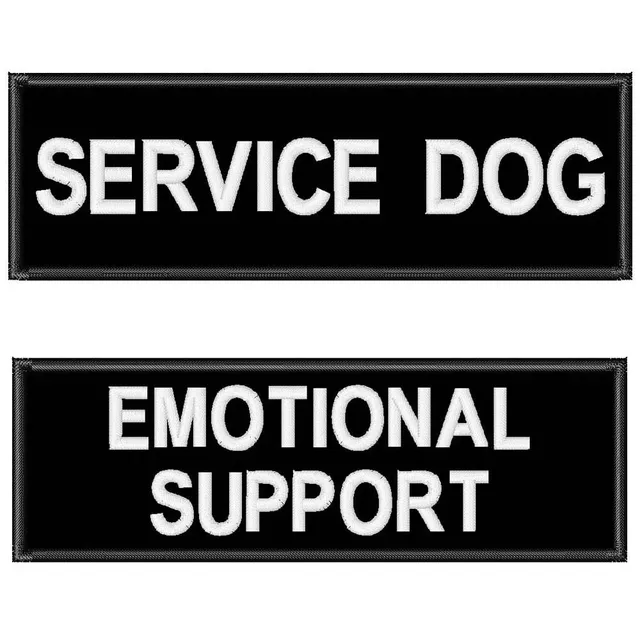
Use of a service dog for PTSD symptoms
Since service animals are specially trained, it is best to contact an organization that specializes in providing service animals to people, especially veterans. You will also need a VA to be considered eligible for a service animal if you get one.
The mere presence of PTSD means that you are disabled, but if the symptoms of PTSD are severe enough to affect your ability to function in the community or in the workplace, it will be considered a disability.
"They can sense when you have a trigger (an episode of PTSD) before you know what it is," explained Denise Wentz, a veteran Wisconsin National Guard dog trainer. Dogs can even be trained to chew on a veteran's legs when they have seizures or nightmares.
Service dogs suffering from PTSD typically cost an average of $20,000 or more, depending on the organization, and finding the right organization to purchase service dogs can be difficult due to the lack of federal training and accreditation legislation.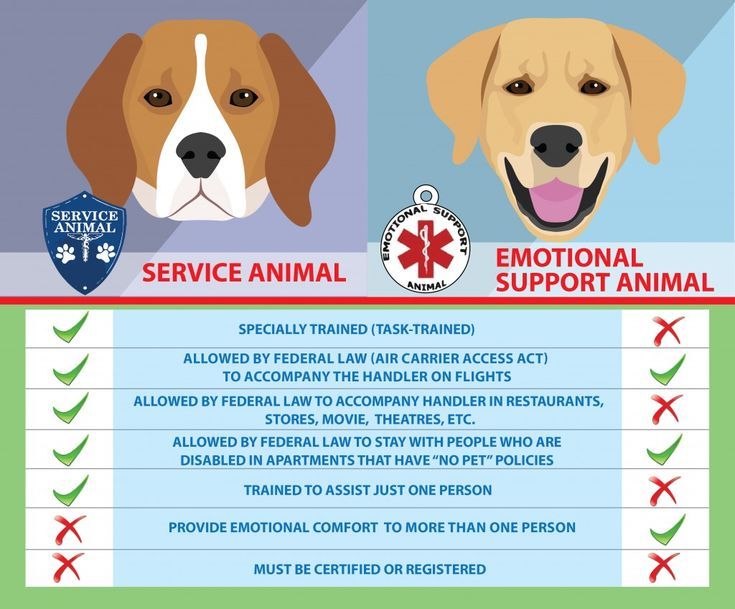
A psychiatric service dog can be trained to perform a wide range of tasks to help a person suffering from depression. This includes tasks related to providing assistance during a crisis, coping with emotional overload, and providing assistance related to treatment.
The most common events leading to the development of post-traumatic stress disorder include: Combat exposure. Physical abuse in childhood. Sexual abuse.
As a general rule, a "real" working dog is easily recognizable by its focused, disciplined and non-reactive demeanor. Service dogs should not be easily distracted by dragging a handler against their will or leaving him to visit anyone they pass.
“The symptoms of PTSD in dogs are similar to those in humans and include chronic anxiety; hypervigilance; avoidance of certain people, places or situations; sleep disorders; fear of being alone; decreased interest in hobbies; or aggression,” Teller said.
Classification of service dogs and assistance dogs helping people with disabilities
ASSISTANCE DOGS - ASSISTANCE DOGS:
0003
1.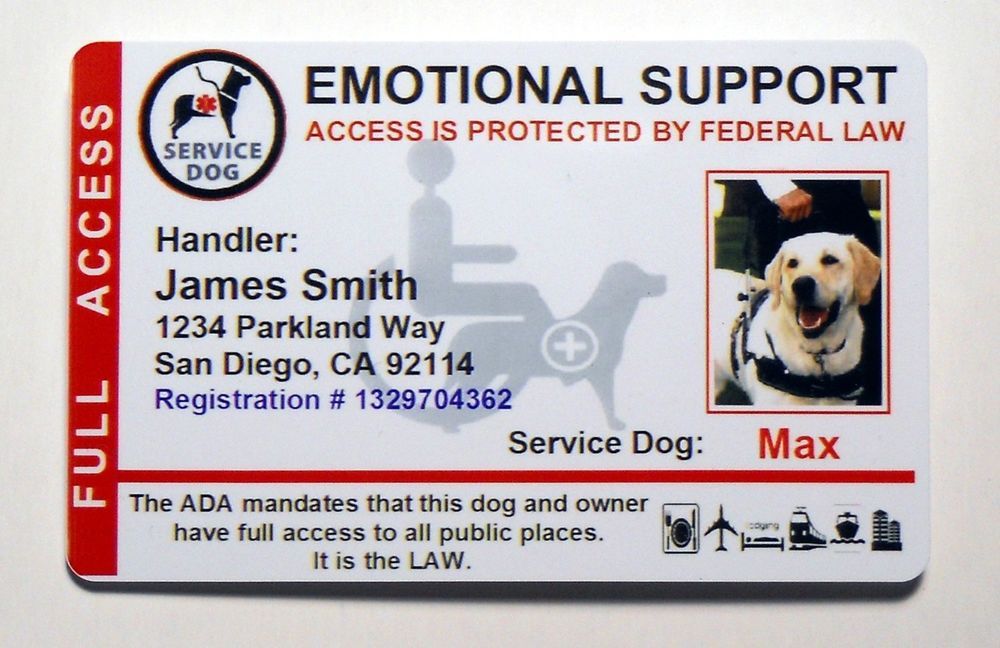 1. MOBILITY SERVICE DOGS or BRACE / MOBILITY SUPPORT DOGS - dogs that provide assistance in movement: towing a stroller, support when walking, support in case of loss of balance, in cases of unsteady gait with cerebral palsy and other diseases. Also, their functions are often supplemented by the functions of the Wheelchair Assistance Dog (point 1.2)
1. MOBILITY SERVICE DOGS or BRACE / MOBILITY SUPPORT DOGS - dogs that provide assistance in movement: towing a stroller, support when walking, support in case of loss of balance, in cases of unsteady gait with cerebral palsy and other diseases. Also, their functions are often supplemented by the functions of the Wheelchair Assistance Dog (point 1.2)
1.2. WHEELCHAIR ASSISTANCE DOGS - assistance dogs (assistant) for people in wheelchairs. They pick up objects, bring things in, open and close doors, turn lights on and off, and perform many other functions.
1.3. MEDICAL ALERT SERVICE DOGS and MEDICAL RESPONSE DOGS are medical alert and alert dogs. They feel physiological changes in the body of their owner and warn of the approach (onset) of a problem (fainting, the onset of a diabetic coma, epileptic seizures).
1.3.1. DIABETES ALERT DOGS are help dogs for people with diabetes. Trained to detect high (hyperglycemia) or low (hypoglycemia) blood sugar levels in people with diabetes and alert their wearers to dangerous changes in blood glucose levels.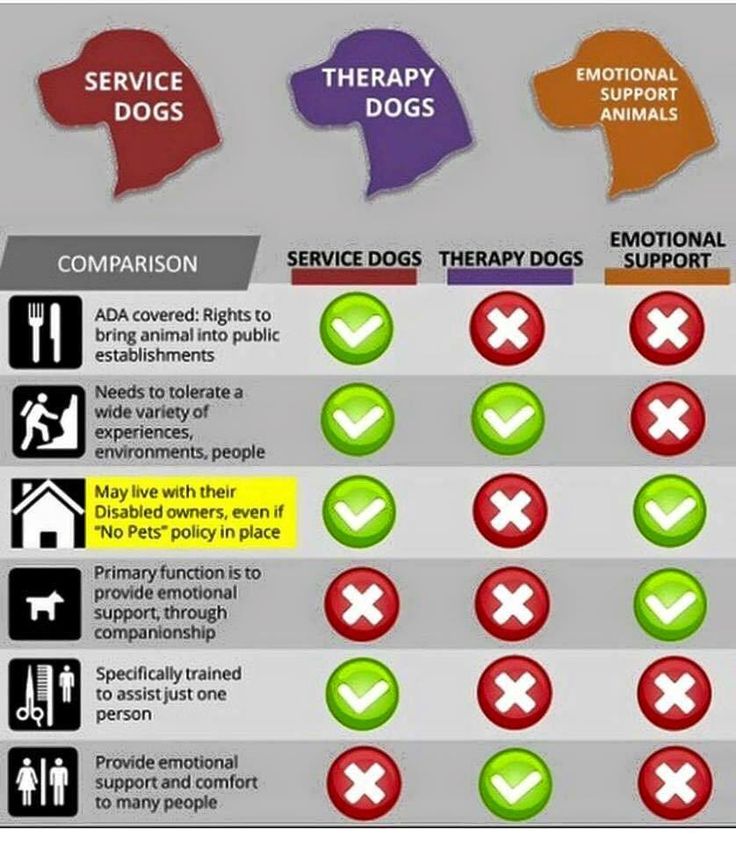
1.3.2. SEIZURE ALERT DOGS are assistance dogs for people with epilepsy. They warn their owner about the onset of an epileptic attack. The owner has time to take measures to prevent an attack, to have time to take a comfortable position of the body so as not to fall. SEIZURE RESPONSE DOG - dogs that help people with epilepsy directly during attacks and immediately after attacks. Their functions: help to take the right position of the body during an attack and convulsions, stimulate a person to wake up after an attack, help get up after an attack, call for help, bring the phone, press the panic button.
1.3.3. ASTHMA ALERT DOGS are assistance dogs for people with asthma or chronic obstructive pulmonary disease. They notify their owners in advance of the onset of an asthma attack so that there is time to take measures to prevent an attack, they are trained to bring an inhaler. In addition, they can wake a person suffering from bad breath or alert others to urgent medical attention.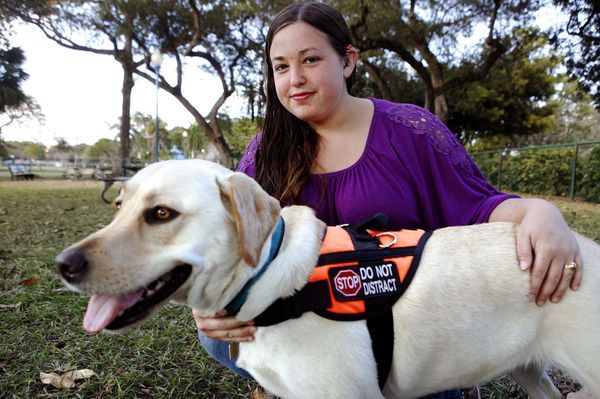
1.3.4. CARDIAC ALERT DOGS - help dogs for people with heart disease. Trained to alert the wearer to impending drops in blood pressure that often cause unconsciousness. Advance warning allows the owner to take the necessary medication, lie down.
1.3.5. SEVERE ALLERGY ALERT DOGS - these dogs smell allergens that are dangerous to humans. Warn their wearer of life-threatening allergens.
1.4. PSYCHIATRIC SERVICE DOGS - help dogs for people with various mental illnesses and disabilities, mental disorders. For example, autism, post-traumatic stress disorder (PTSD), panic attacks, schizophrenia, depression, anxiety, and bipolar disorder.
1.4.1. AUTISM SERVICE DOGS are assistance dogs for people with autism. Help people to socialize, gain independence and the ability to perform daily activities.
1.4.2. PTSD SERVICE DOGS are assistance dogs for people with Posttraumatic Stress Disorder (PTSD) and panic attacks. In the event of panic attacks and stressful situations with its owner, the dog “returns him to reality”, helps to abstract from the stressful situation.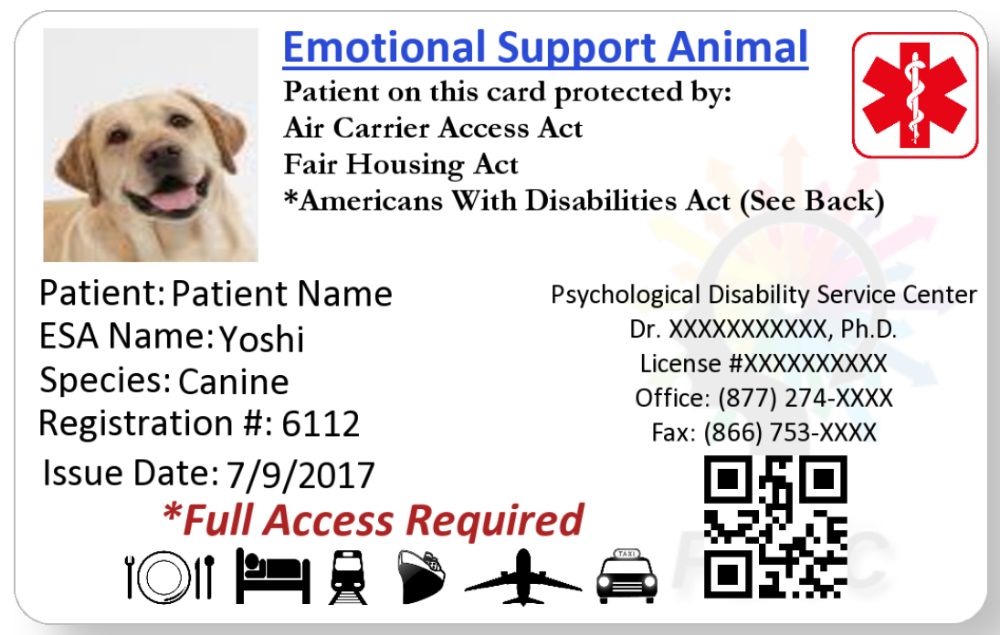
2. GUIDE DOGS – guide dogs for the blind. Help blind and visually impaired people move outdoors and avoid obstacles, warn of obstacles that arise on the way. In addition, dogs are trained to follow basic commands, fetch and serve items.
3. HEARING SERVICE DOGS - assistance dogs for deaf and hard of hearing people. Alert hosts to important sounds such as doorbells, fire alarms, telephone or alarms. They can also work outside the home, alerting their owner to car signals, signaling if someone calls the owner's name.
Does not apply to assistance dogs:
- THERAPY DOGS - dogs for canistherapy. Canistherapy is a method of rehabilitation of people with the help of specially trained dogs for diseases such as cerebral palsy, psychomotor development disorders, recovery after a stroke, depression in children and adults, in the treatment of hospitalism and acute stress disorders, psychological trauma. Canistherapy dogs are successfully used for socialization and adaptation to everyday life of children and adults with various mental disorders: autism, Down syndrome.
